Cheese for Hiking
Hiking food
Unless you happen to be lactose intolerant, cheese rates as one of the most popular foods worldwide. Humans have been producing cheeses for around 7,000 years and there are hundreds if not thousands of varieties. Hard cheeses, soft cheeses, cheese with mould, cheese with fruit, there is just so much choice!
In addition, cheese is calorie dense and also contains a good degree of fat, protein and of course calcium.
I must own up to being a huge cheese fan and on any given day if I’m offered a choice of cheese or chocolate, cheese wins out, always. As such I always look at my options for eating cheese on a hike.
The following article looks at a range of easy to find cheeses that are worthwhile considering for different hiking situations and while they may not suit all tastes, there is something for everyone and for every situation.
Hard Cheese
Hard cheeses are the staple for outdoor trips. They last well in a wide range of weather conditions, will last much longer than the soft cheese alternatives, and provide a high level of calories.
Hard cheeses are low in moisture and as such are less likely to go mouldy. In fact, the lower the moisture content the longer a cheese will last. If you are carrying hard cheese in cold conditions they will usually last 4-5 days. In hot conditions, hard cheeses tend to sweat and at best will usually last for around 2 days at most in good condition. They may last longer but it’s best not to push the friendship and run the risk of losing the remainder to mould.
Best Uses: Extended trips, cold-hot weather, snacking, meals and meal toppings/additives
Storage: If you are carrying hard cheese in warm/hot weather avoid plastic wraps as this will just cause the cheese to sweat faster. Wax proof paper is a good option in hot weather.
Gouda:
- Taste: Mild, full-flavored, nutty, sweet
- Texture: slightly rubbery
- Fat content: 29 grams/100 grams
- Protein: 24 grams/100 grams
- Calories: 359 calories/100 grams
I don’t eat Gouda when I’m at home but I love the taste and texture more than most of the other moister hard cheeses. For me this is a lunch option when hiking. A 250 gram block will last me around two days at the start of a hike or if I have a town stop.

Edam:
- Taste: Sweet and fruity, not so cheesy in taste
- Texture: Firmer texture than Gouda, slightly chalky and rubbery
- Fat content: 26 grams/100 grams
- Protein: 25 grams/100 grams
- Calories: 335 calories/100 grams
As popular as Edam cheese is, I’m not a great fan. The taste and the texture just don’t do it for me. If you do like it this is another great lunch option for hot weather conditions or if hiking in cooler weather a good snack option.

Jarlsburg:
- Taste: Mild bitey taste, sweet and fruity, cheese flavour stays with you longer
- Texture: Softer texture for a hard cheese
- Fat content: 27 grams/100 grams
- Protein: 27 grams/100 grams
- Calories: 351 calories/100 grams
One of my favourite hard cheese options and good either as a snack or lunch. The taste is good as is the texture.
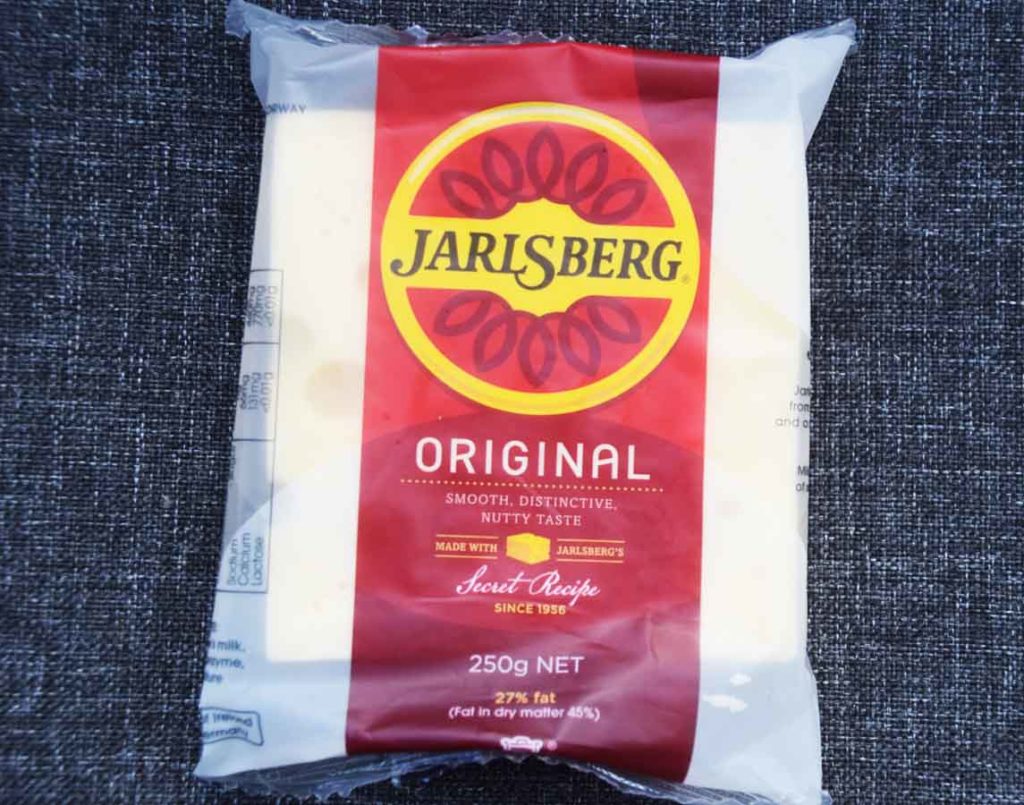
Strong and Bitey:
- Taste: A rich, full bodied cheese with an extra sharp taste
- Texture: Harder but crumbly
- Fat content: 35 grams/100 grams
- Protein: 25 grams/100 grams
- Calories: 411 calories/100 grams
Before writing this article I hadn’t really done a comparison of calories between the cheeses and I didn’t realise how calorie dense this cheese. This is my lunch option for day 1+2 on a thru hike. This cheese lasts well, tastes good and has a lower moisture content to the other cheeses already mentioned meaning that it’s likely to last longer without spoiling.
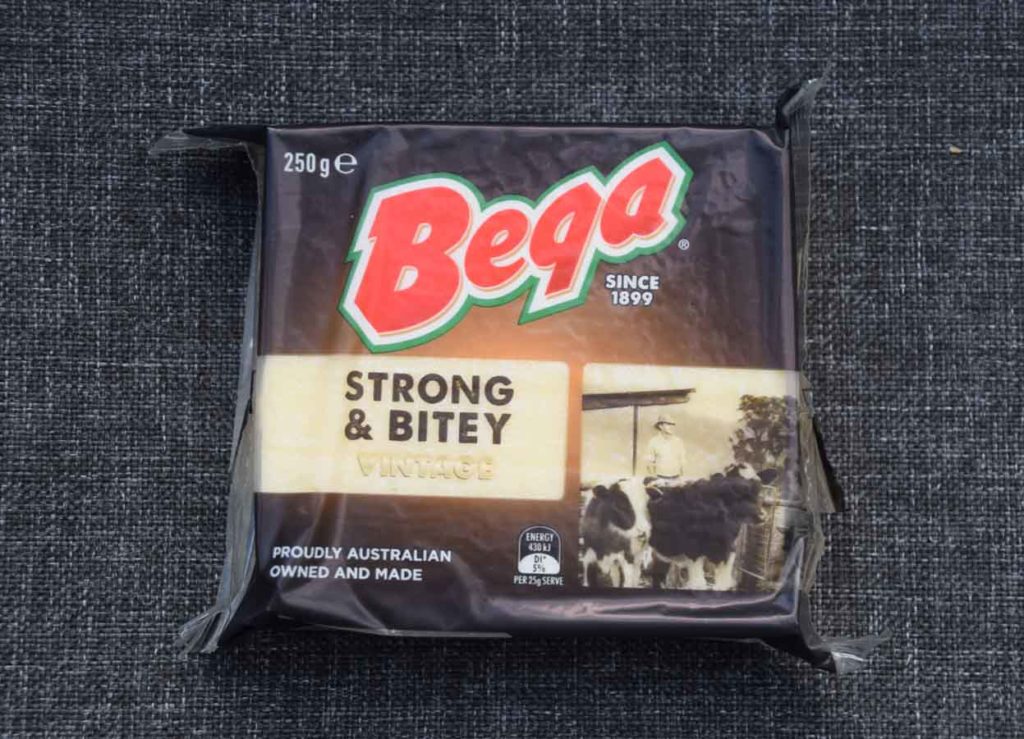
Extra Strong Romano:
- Taste: A very strong cheese flavour
- Texture: Harder but also very crumbly
- Fat content: 27 grams/100 grams
- Protein: 33 grams/100 grams
- Calories: 377 calories/100 grams
Not a cheese that I usually carry on a hike as it’s not really the type of cheese you just sit and eat as a snack or meal; the taste is just too intense and it is a very dry cheese. However if you are into cooking on the trail then it’s a good meal additive particularly for pasta. The taste is much more intense than Parmesan so you need less to make an impact.
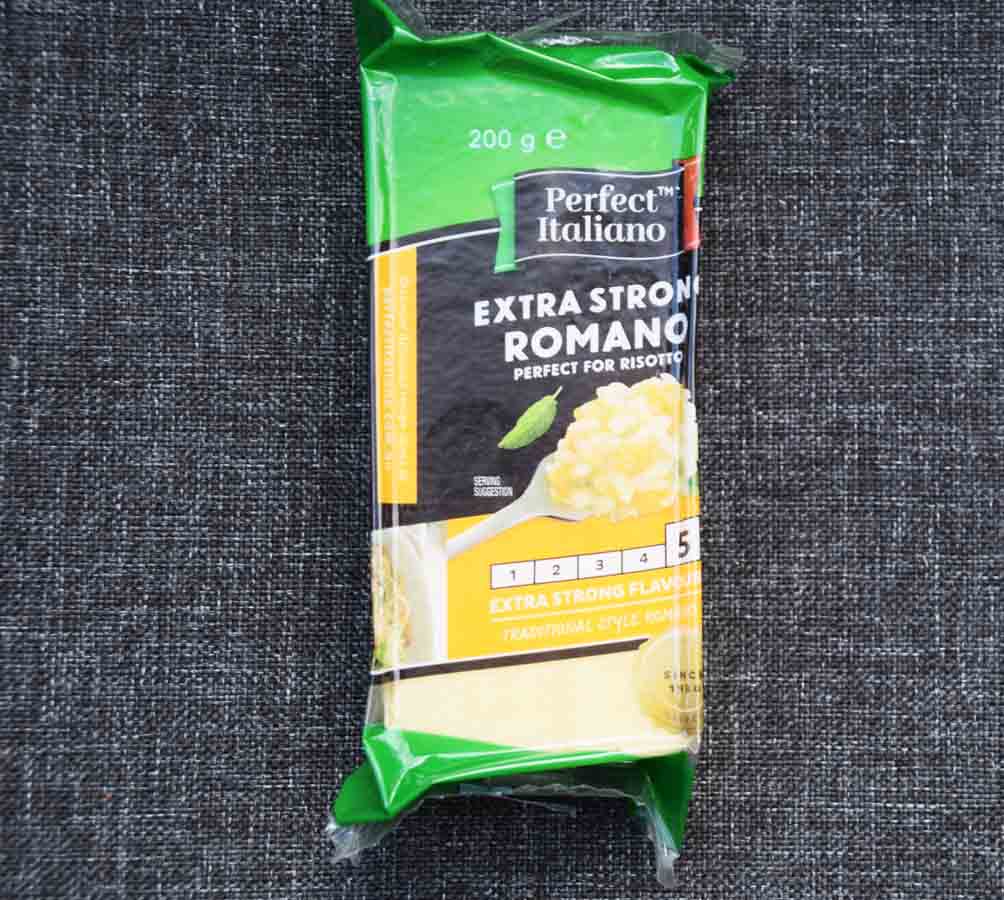
Parmesan:
- Taste: Bold distinct cheese flavour of medium strength
- Texture: Hard and crumbly
- Fat content: 27 grams/100 grams
- Protein: 33 grams/100 grams
- Calories: 350 calories/100 grams
Parmesan is much better known than the Extra Strong Romano and milder in flavour. While I can eat small pieces as a snack it’s bitey flavour can be a bit intense so it is best used as a meal additive. Again this cheese is fairly dry so will last longer than the moister hard cheeses listed above.
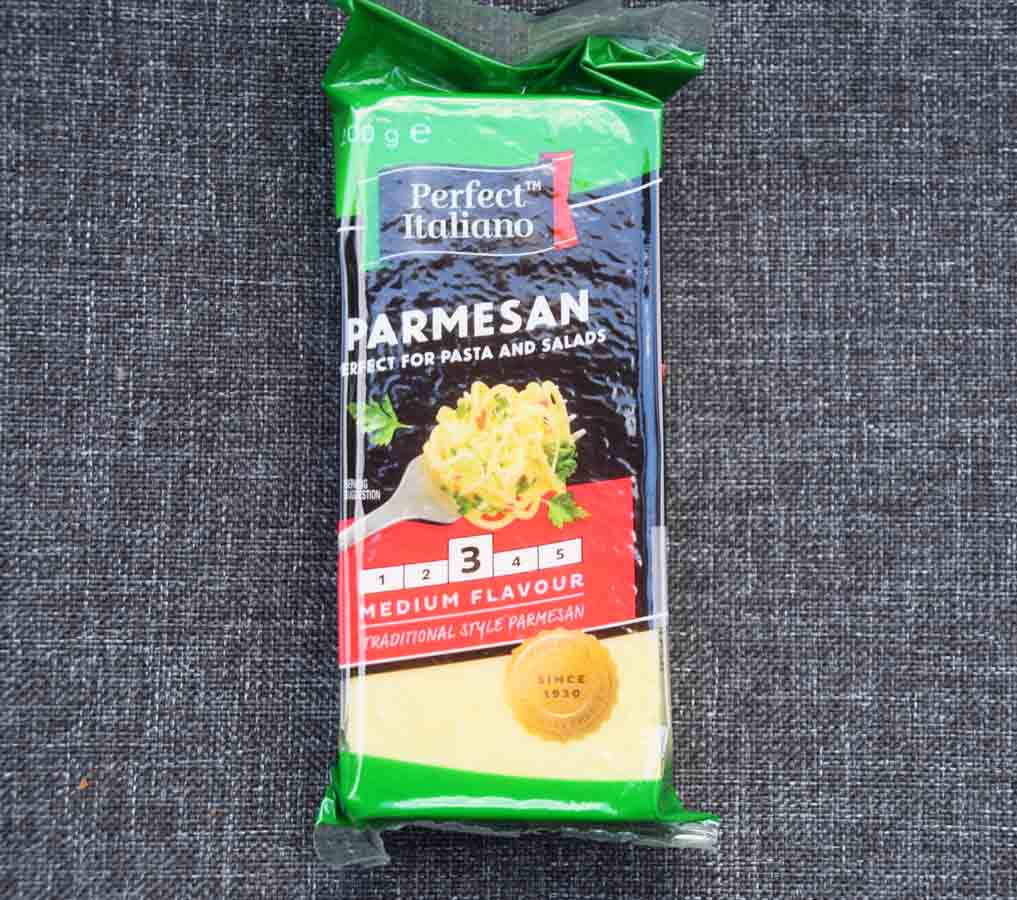
Soft Cheese
Soft cheeses are high in moisture content so tend to have a very short life span and as such are usually not something you see on hiking trips. I haven’t even mentioned cottage cheese or ricotta as while you can may away with them on a day hike if stored properly, they aren’t the best option. If you are carrying soft cheeses on cold winter hikes then they can last a bit longer but if the weather is warm or hot they should either be eaten as lunch on the first day or used as dinner on the first night.
If you are going for soft cheese, the mould style cheeses e.g. Blue Castello or Brie area a good way to go.
Best Uses: A snack or meal on day trips or hiking in cold conditions. Soft cheeses are my favourite and will often be my dinner if I am staying in a town that has a shop.
Storage: If you are carrying soft cheeses on a cold winter hike you will get away with a plastic ziploc bag but greaseproof paper is best. If it’s war or hot, I suggest bringing a small freezer pack and ice block to stop them turning into liquid.
Castello Double Cream Brie:
- Taste: Bold distinct cheese flavour of medium strength
- Texture: White mould soft cheese, very creamy
- Fat content: 39 grams/100 grams
- Protein: 14 grams/100 grams
- Calories: 410 calories/100 grams
Currently my favourite (mainstream cheese) and very easy to devour. If I’m doing a single overnight hike this will be my pre dinner snack.

Blue Castello:
- Taste: Bold distinct cheese flavour of medium strength
- Texture: Blue mould soft and creamy
- Fat content: 42 grams/100 grams
- Protein: 13 grams/100 grams
- Calories: 431 calories/100 grams
This blue mould cheese has a soft creamy texture and was my favourite mainstream cheese for many years. Good for single day hikes.

Processed Cheese
This is the cheese of my childhood and was designed to be used in areas where refrigeration wasn’t not readily available or reliable. You buy this type of cheese off the supermarket shelf – it has a very long life span until it’s opened. My generation also called this ‘plastic cheese’ as the texture and the flavour isn’t anywhere as good as the ‘real’ cheeses discussed above. It’s never going to be my first choice. I use this cheese on multi week hikes where ‘real’ cheese just doesn’t work.
There are a few varieties on the market but this brand is one of the more common ones and from a personal perspective suits my tastes buds better than other brands.
Best Uses: Extended trips, where there’s no refrigeration.
Storage: Nothing special but once opened you should either consume it in a day or two. I will usually fold the foil wrapping back over the uneaten cheese.
Dairlylea Processed Cheddar:
- Taste: Strong cheese flavour but almost a bit plastic
- Texture: Rubbery
- Fat content: 27 grams/100 grams
- Protein: 19 grams/100 grams
- Calories: 318 calories/100 grams
I used to use this cheese as my lunch for two days, eating half over two consecutive days when I need to either food cache or mail food ahead. I have now replaced this with freeze dried cheese if its available
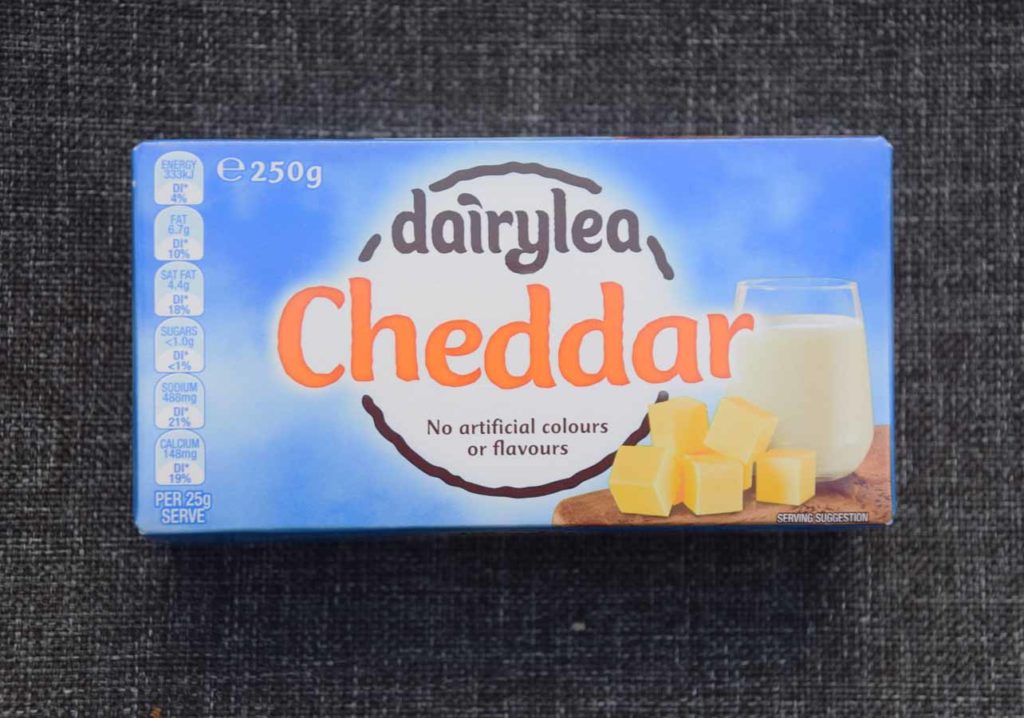
Dairlylea Cheesestik:
- Taste: Strong cheese flavour but a bit plasticy
- Texture: Rubbery
- Fat content: 27 grams/100 grams
- Protein: 14 grams/100 grams
- Calories: 322 calories/100 grams
Funnily enough I carry cheese sticks even though I’m a discerning cheese eater. Cheese Stiks are great as a snack on the days when I don’t have the block cheese for lunch and will come with me on every hike.
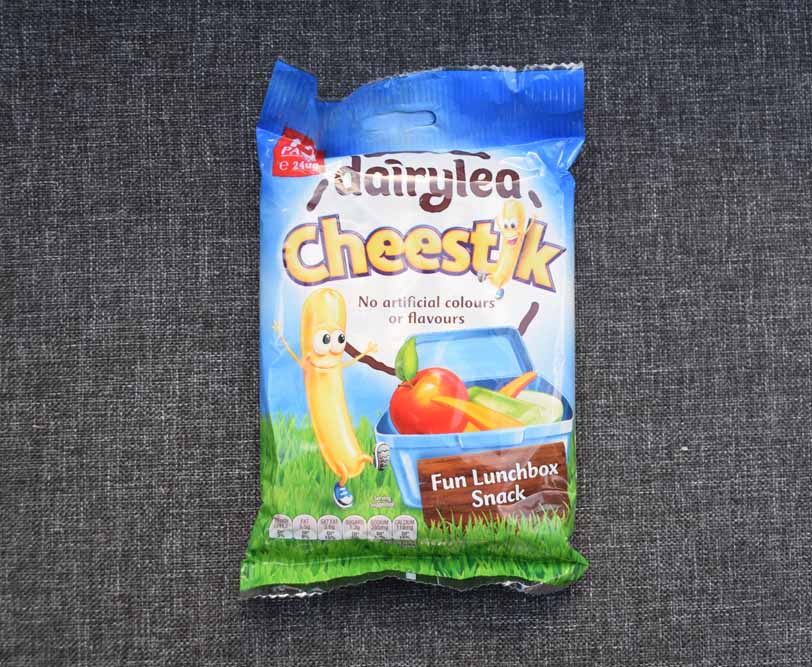
Campers Pantry Cheddar Cheese Bites:
- Taste: Strong concentrated real cheese flavour
- Texture: Slightly crunchy initially then softens in the mouth
- Fat content: 54 grams/100 grams
- Protein: 37.4 grams/100 grams
- Calories: 632 calories/100 grams
This cheese has now become my ‘go to’ option for hikes and in colder weather will last 6-7 days in good condition. It’s real cheese and packed with calories and taste.
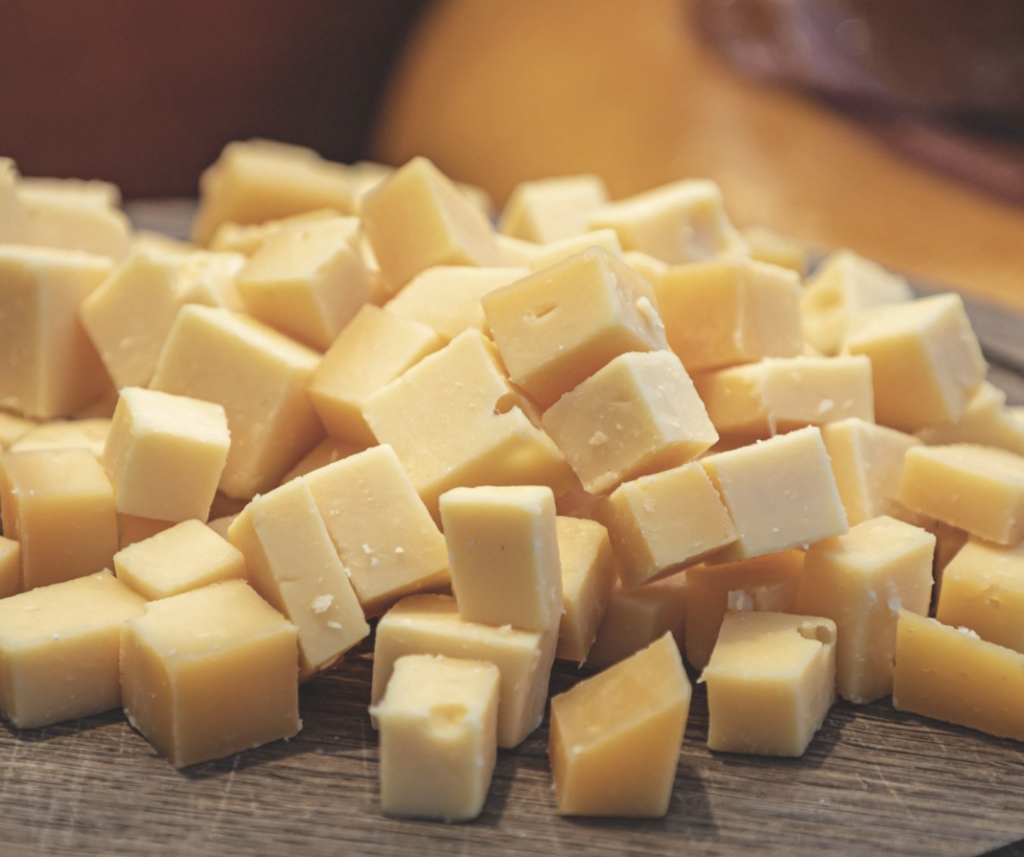
Other
Since originally writing this post the landscape has changed and now you can get both plant based cheese as well as Lactose free cheese. We’ve tried them both and while we do love the Lactose free cheese we’re not such big fans of the plant based options but they may suit you.
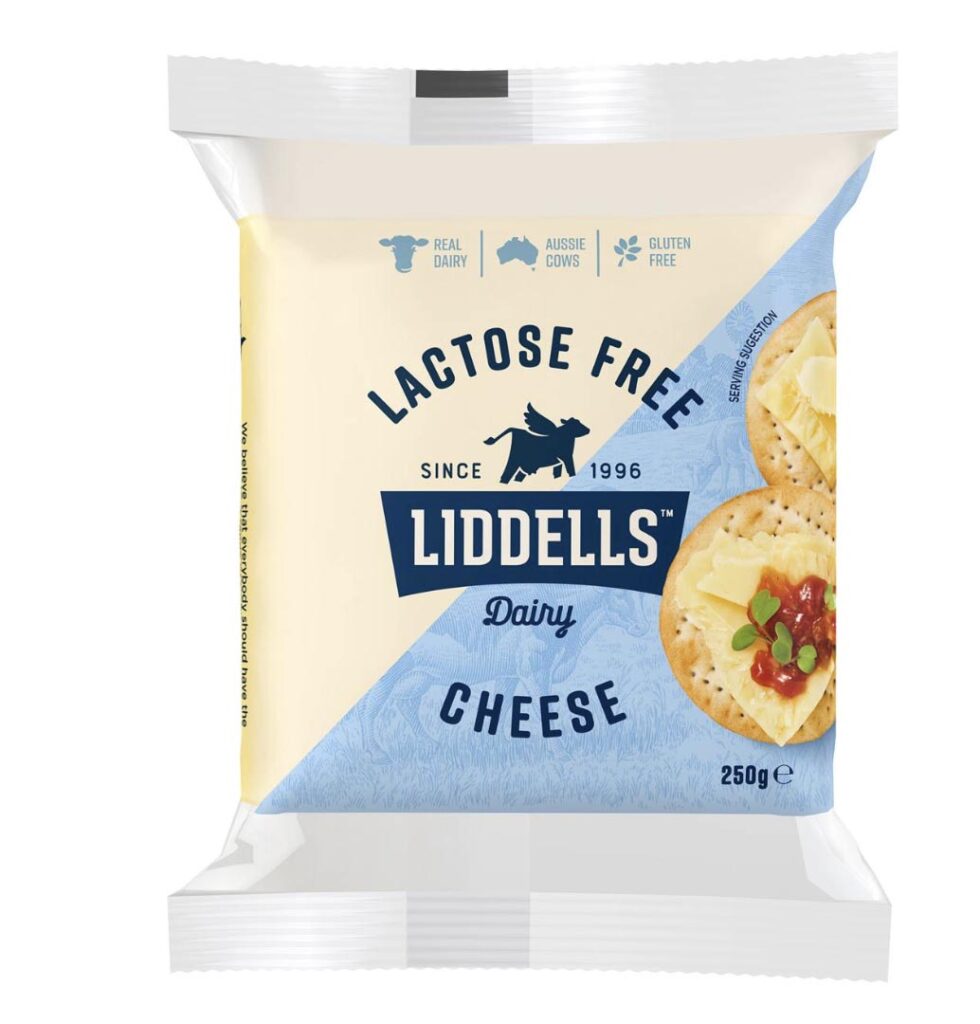
Lactose free cheese. The taste of this is pretty good and all worth considering if you are Lactose intolerant

Plant based cheese. While I don’t mind the taste the texture is a bit like eating an eraser, each to their own!
Final Words
Cheese isn’t something that you might think of when it comes selecting food for hiking. However, cheese definitely does have a place on day hikes or early on during longer hikes. One thing I would say here though is that you shouldn’t try a new type of cheese for the first time on a hike. Have a taste test at home to see what you like (and don’t like) and only take what appeals to you.
While ‘real’ cheese is by far the best option, freeze dried and processed cheese and the additive types of cheese each have their place on a hike; it just depends on the style of hiking you do.
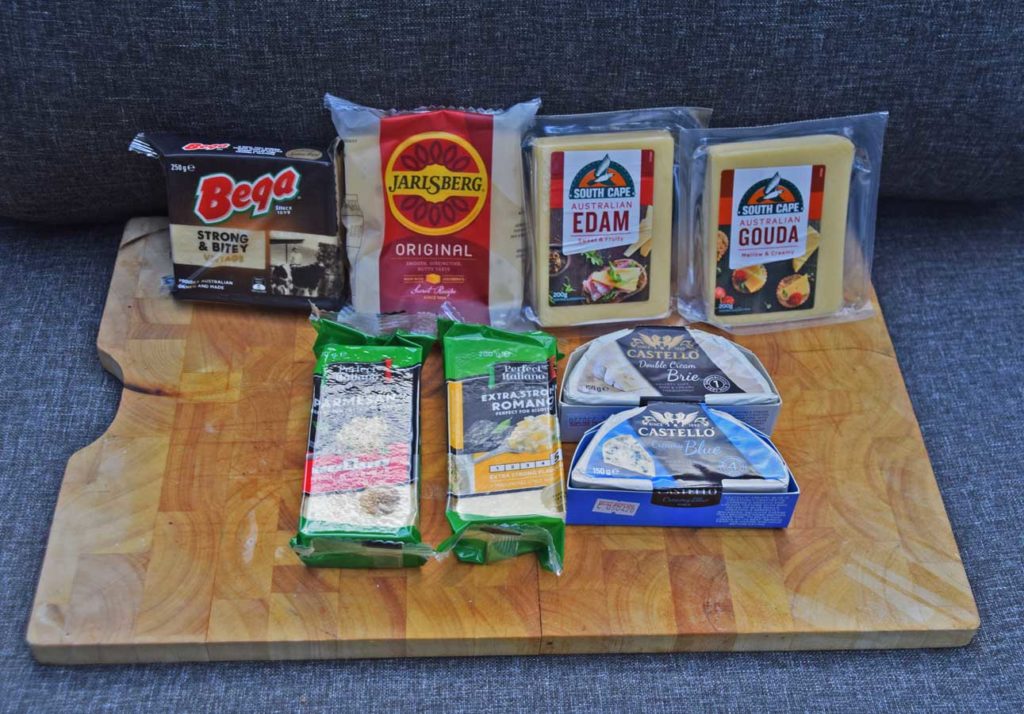
So many choices!